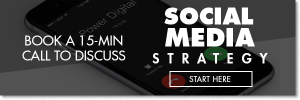Facebook Audience Size and Other Tips

The ideal audience size for Facebook advertising will rely heavily on your ad’s purpose, your product, and your target audience. Both targeting “specific” groups and “broad” groups can yield great success in different scenarios. Throughout this blog, you will find a breakdown of when to utilize a large audience and when to use a small audience, as well as other tips and tricks.
Targeting a Small Audience
When your product is very specific, your perimeters are going to be stricter. Let’s say you’re promoting an event within a certain city to a particular group of people. In this case, your target audience is very specific and will be well under 1,000,000. Given that you’d only want the ad to reach the right people who can attend the event, a smaller audience size is ideal because it reflects your true target. However, keep in mind that the smaller the audience, the more expensive it will be to reach them. Also, remember that your budget and audience size may not spend evenly due to it being a narrow audience. In other words, do not spend $600 dollars to reach 6,000 people.
Related: What is Facebook Audience Network?
The ideal size for a small audience will depend on your budget. Moreover, if your deeper in the sales funnel, your audience will likely be smaller as well. However, if you are near the top and still in a brand awareness stage, a larger, yet targeted audience will be more beneficial for collecting data and spending your budget wisely.
Targeting a Large Audience
If you’re casting a net to gain brand awareness, set the appropriate targeting criteria and shoot for a broad audience. Once you test multiple broad audiences and receive the data, you’ll be able to see what qualifiers are performing best in order to bucket another audience as your ads go down the sales funnel. Although this is completely subjective to your ad, product, location, and purpose, a general best practice is to test a few audiences against each other with sizes ranging from 1-5 million.
Where to Start
Start broad and then narrow the audiences as you gain insightful data to make educated inferences from. Based on the data you collect, keep adding layers of targeting until you discover your optimal audience: targeted enough to drive a great CTR and CR (or engagement rate depending on your goal), yet still reaching a large enough audience at a decent cost per impression.
Signs that Your Audience is Too Small
If your cost per reach is extremely high, your audience is too small. You’ll want to broaden your targeting a bit in order to lower that cost. Keep an eye on your CTR, CR, and/or ER in order to make sure that you are still reaching the right people who will likely become customers. Likewise, if your CTR is low, but your budget is high, you are either bidding on a dead audience (no longer interested) or your audience is too small. Take into consideration a creative refresh or tweaking your audience.
Related: Facebook Lookalike Audiences & Targeting: A Quick Guide
So You Like Numbers…
As mentioned earlier, if you are working on a brand awareness campaign, create multiple tests of audiences ranging from 1 million to 5 million. If you are testing out smaller audiences, generally speaking, a national campaign should be above 500,000. Moreover, if you are running a local campaign, your audience will be much smaller at the zip code level. Make sure to monitor your spending and audience size closely when at the zip code level to make sure your ad is spending efficiently.
Wrapping Up
There is no secret formula necessarily. Facebook advertising and finding the optimal audience for you will be a matter of testing and collecting data. At the top of the sales funnel, you will have a much broader audience than as you go down into advertising to your warmer and hotter leads. Keep your audiences targeted, monitor their performances, and know when to broaden or narrow your targeting criteria.
Our Editorial Standards
Reviewed for Accuracy
Every piece is fact-checked for precision.
Up-to-Date Research
We reflect the latest trends and insights.
Credible References
Backed by trusted industry sources.
Actionable & Insight-Driven
Strategic takeaways for real results.








